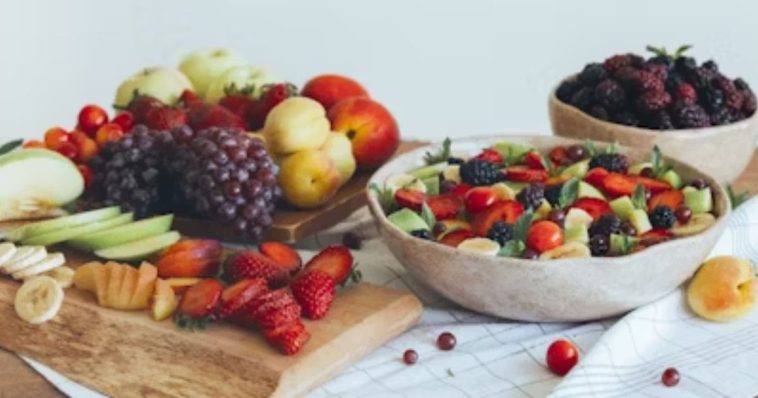As parents, caregivers, and educators, teaching children the importance of healthy eating is one of the most valuable lessons we can impart. Encouraging good habits from an early age lays the groundwork for a lifetime of proper nutrition, higher energy levels, and overall well-being. However, getting kids excited about healthy food can be challenging, especially with the constant allure of sugary treats and processed snacks.
The key to fostering healthy eating habits in kids is to make it fun, interactive, and something they can actively participate in. When children have a hand in selecting ingredients, preparing meals, or creating their snacks, they are more likely to embrace and enjoy nutritious choices. With creative food ideas and simple, kid-friendly recipes, healthy eating can become an exciting part of daily life. This article explores strategies to make nutritious meals enjoyable, offers tips for getting kids involved in the kitchen, and shares some easy recipes to help get started.
Top 4 Kid-Friendly Healthy Eating Habits for Lifelong Wellness
1. Start with Simple, Colorful, and Kid-Friendly Foods
A great way to get kids excited about healthy eating is to introduce them to a rainbow of fruits and vegetables. Those bright, bold colors aren’t just visually appealing—they contain a variety of essential nutrients that support growth and overall health. When you present these foods in a child-friendly and inviting way, kids are more open to tasting them and learning to enjoy their benefits.
Fruit Kabobs: A Sweet and Fun Twist on Fruit
Fruit kabobs are a fun and hands-on way to get kids excited about enjoying healthy snacks. Letting them build their colorful skewers makes trying new fruits feel like a fun activity instead of a chore. They’re simple to make and allow kids to get involved in the process. They’re making their favorite fruits and assembling the kabobs themselves. You can offer a variety of colorful fruits, such as strawberries, grapes, pineapple, melon, and kiwi, and let kids pick their favorites to skewer onto a stick.
Recipe for Fruit Kabobs:
Ingredients:
- Strawberries (hulled)
- Grapes (washed)
- Pineapple (cut into chunks)
- Melon (cubed)
- Kiwi (peeled and sliced)
- Wooden skewers or reusable metal skewers
Instructions:
- Rinse the fruit thoroughly, then slice it into small, kid-friendly pieces.
- If using wooden skewers, soak them in water for 10 minutes before assembling the fruit kabobs to prevent them from splintering.
- Let your child choose and skewer the fruits in any order they like.
- Serve the kabobs as a fun snack or as part of a meal.
This activity not only teaches kids about the importance of fruit but also makes the experience interactive. You can even discuss the health benefits of each fruit, such as vitamin C in strawberries and antioxidants in grapes.
Veggie Dip Cups: A Fun and Tasty Way to Get Kids to Eat Their Veggies
Getting kids to enjoy vegetables can be tricky, especially if you’re dealing with a picky eater. However, turning veggies into a fun, snackable experience, such as dip cups, can make all the difference. Turning vegetables into an appealing snack can be as easy as pairing them with a fun, flavorful dip. Veggie dip cups are a great way to give kids their daily dose of vegetables while allowing them to choose their veggies and dips.
Recipe for Veggie Dip Cups:
Ingredients:
- Baby carrots
- Cucumber slices
- Cherry tomatoes
- Celery sticks
- Bell peppers (sliced)
- Hummus, ranch dip, or yogurt-based dip
Instructions:
- Prepare the veggies by washing and slicing them into small, kid-friendly pieces.
- Place a mix of colorful vegetables into small cups, ensuring each one has a fun variety to keep things visually appealing and inviting.
- Add 1 to 2 tablespoons of dip (such as hummus, ranch, or yogurt-based dip) to the bottom of each cup.
- Serve these veggie dip cups as a snack or side dish for lunch or dinner.
These veggie cups are not only eye-catching but also incredibly simple to assemble. T’s—each one is portable and tells its own story, making them perfect for packed lunches or snacks. Letting your child choose which vegetables to include can make the process more enjoyable and help them feel more involved in their food choices.
2. Encourage Kids to Get Creative with Their Own Healthy Snacks
Kids love to be creative, especially when it comes to food. By giving them the freedom to design their healthy snacks, you empower them to take ownership of their food choices. You can provide a variety of wholesome ingredients and let them create their unique snacks, whether it’s assembling a “fruit pizza” or decorating whole-grain toast with toppings.
DIY Healthy Pizza on Whole Grain Bread
A “pizza” made from whole-grain bread is a simple, healthy snack that kids can decorate themselves. You can use toppings like tomato slices, mozzarella cheese, bell peppers, and spinach, all while teaching them about the benefits of whole grains and vegetables.
Recipe for DIY Healthy Pizza:
Ingredients:
- Whole grain bread (sliced)
- Tomato sauce (low-sodium)
- Mozzarella cheese (shredded)
- Bell peppers (sliced)
- Spinach (fresh)
- Cherry tomatoes (sliced)
- Olive oil (optional)
Instructions:
- Preheat the oven to 375°F (190°C).
- Place the slices of whole-grain bread on a baking sheet.
- Let the kids spread tomato sauce on the bread slices.
- Encourage them to top their “pizzas” with a variety of colorful vegetables, such as bell peppers, spinach, and cherry tomatoes.
- Sprinkle mozzarella cheese on top and drizzle with a bit of olive oil for extra flavor (optional).
- Bake in the oven for about 10 minutes or until the cheese is melted and bubbly.
This DIY healthy pizza is a great way to incorporate fiber-rich whole grains and vegetables into a meal while letting kids have fun with the toppings. Additionally, they’ll take pride in creating their own delicious and nutritious food.
Yogurt Parfaits: A Sweet Yet Healthy Treat
Yogurt parfaits are another great way to get kids involved in making their snacks. Layering yogurt with fruits and granola not only creates a visually appealing snack but also provides a balance of protein, fiber, and healthy fats. Allowing kids to choose their toppings makes the process even more enjoyable.
Recipe for Yogurt Parfaits:
Ingredients:
- Greek yogurt (unsweetened)
- Fresh berries (strawberries, blueberries, raspberries)
- Granola (low-sugar)
- Honey (optional)
- Chia seeds (optional)
Instructions:
- In a glass or small bowl, add a layer of Greek yogurt.
- Let the kids add a layer of fresh berries, followed by a layer of granola.
- Repeat the layers until the cup is full.
- Drizzle with honey for a touch of sweetness, if desired, and top with chia seeds for an extra nutritional boost.
- Serve immediately and enjoy!
Yogurt parfaits are a fun, customizable treat that allows kids to choose their favorite ingredients. By using plain Greek yogurt, you reduce added sugar, and fresh berries and granola add natural sweetness and crunch.
3. Incorporate Educational Activities About Healthy Eating
Teaching kids about healthy eating goes beyond simply preparing meals together. By incorporating educational activities into the process, children can gain a deeper understanding of why certain foods are beneficial for them and how they affect their bodies. These activities help reinforce the idea that food is not only for enjoyment but also serves as fuel for their growing bodies.
Create a Colorful Food Rainbow
One fun way to teach kids about healthy eating is by creating a “food rainbow.” Encourage kids to eat a variety of colorful foods each day to make sure they’re getting a full spectrum of nutrients. Discuss the different nutrients in each color group, such as the vitamin C in oranges or the antioxidants in blueberries.
Activity Idea: Food Rainbow Chart
Create a large rainbow chart on a poster board, with each color section corresponding to a specific food group (red = fruits, orange = vegetables, yellow = grains, etc.). As kids eat different colored foods throughout the week, they can add stickers or drawings to their rainbow chart. This visual representation helps them track their progress as they learn about the importance of a diverse diet.
Talk About Portion Sizes and Balanced Meals
Understanding portion sizes and the concept of balanced meals is a crucial lesson for children. You can explain how different foods provide energy for other activities, like fruits and vegetables for healthy digestion, proteins for muscle growth, and whole grains for long-lasting energy.
Activity Idea: MyPlate Craft
Using the USDA’s MyPlate model, create a simple craft that teaches kids how to eat USDA-balanced meals. Use paper plates to draw sections that represent fruits, vegetables, grains, protein, and dairy. Have the children fill each section with pictures or cutouts of healthy foods they find in magazines. This craft helps them visualize what a balanced plate looks like and encourages them to make healthier food choices.
4. Get Kids Involved in the Kitchen
One of the most effective ways to teach kids about healthy eating is to involve them in the kitchen. Children who actively participate in meal preparation are more likely to develop a greater appreciation for food and understand how it’s made. Plus, cooking together can be a fun and bonding experience.
Create a “Healthy Snack Station”
Please set up a designated area in the kitchen where kids can prepare their healthy snacks. Stock it with a variety of nutritious ingredients, such as sliced fruits, vegetables, whole-grain crackers, yogurt, and hummus. Please encourage your child to create their snacks and experiment with different combinations. This hands-on approach allows them to feel more empowered in their food choices.
Let Kids Help with Meal Prep
Depending on their age and ability, let your kids help with simple meal prep tasks, such as washing vegetables, stirring ingredients, or setting the table. They’ll enjoy having a role in preparing the meal, and it’s an opportunity to teach them about food safety and the importance of proper meal planning.
Making Healthy Eating Fun: A Recipe for Lifelong Habits
Teaching kids to eat healthy doesn’t have to feel like a battle. Turn it into a fun, hands-on lesson by getting them involved in the kitchen and using bright, playful ingredients. When children participate in preparing meals, exploring new flavors, and learning about nutrition through games or stories, healthy eating becomes something they actually look forward to. It’s all about creating a positive, engaging atmosphere that turns food into a daily adventure. With these habits in place early on, you’re setting yourself up for a lifetime of healthy eating and a strong foundation. So grab those aprons, get a little messy, and enjoy the journey of discovering healthy foods together!



